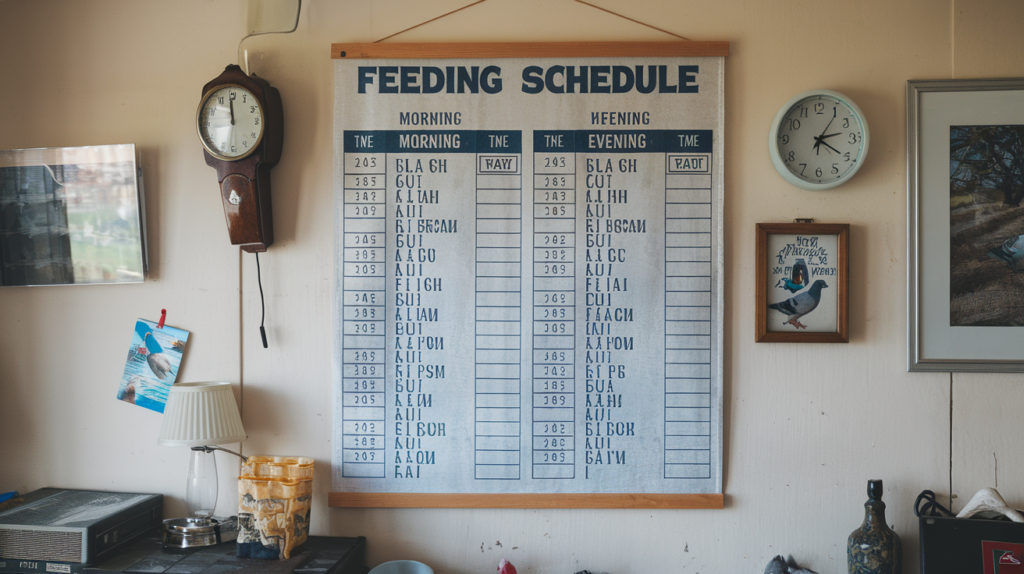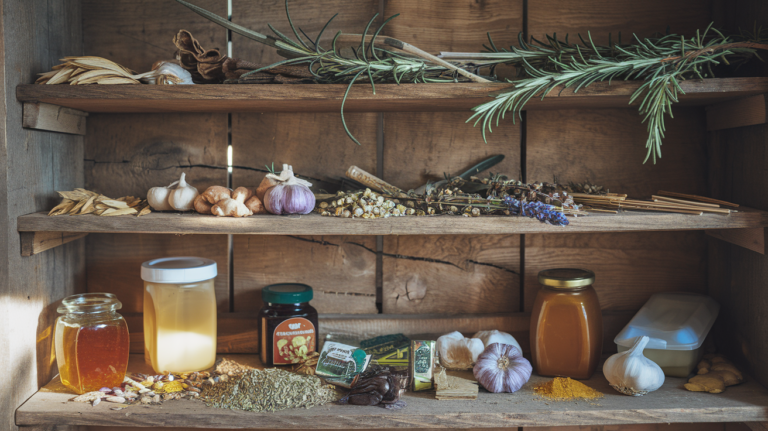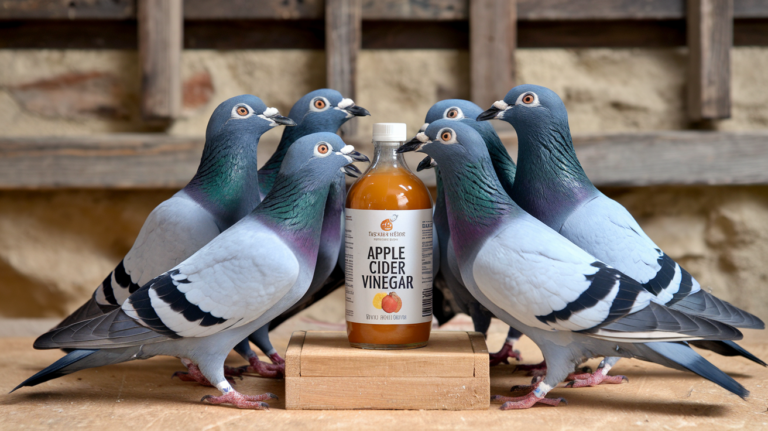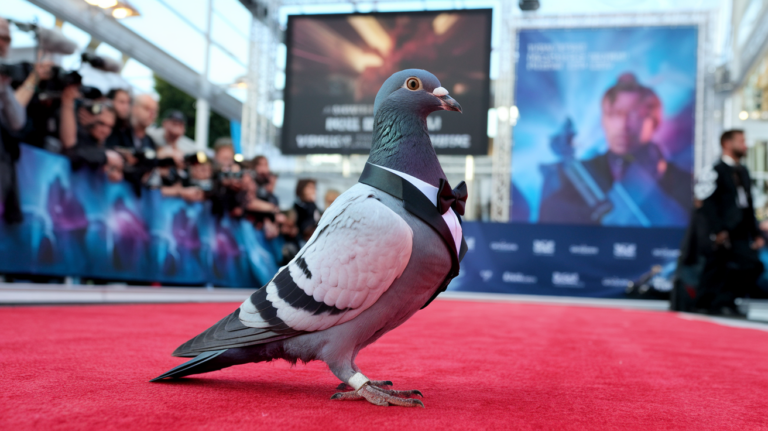
One of the most common questions among new and seasoned pigeon fanciers alike is: “Should I feed my pigeons once a day or twice a day? And what exactly should I be feeding them—and how much?” If you’re wondering how to structure your racing pigeon feeding schedule, you’re not alone.
In this article, we’ll cover everything you need to know about the best pigeon feeding schedule, what to feed your racing pigeons, and how much feed is ideal for keeping your loft healthy, fit, and race-ready.
Should You Feed Racing Pigeons Once a Day or Twice a Day?
Both once-a-day and twice-a-day feeding methods can work well—it all depends on your management style, training schedule, and goals. Here’s a breakdown of the pros and cons of each method:
✅ Feeding Racing Pigeons Twice a Day (Most Common Practice)
Most racing pigeon fanciers prefer feeding twice a day—once in the morning and once in the evening. This method offers more control over the birds’ condition and helps maintain a consistent training rhythm. It also supports a well-rounded racing pigeon feeding schedule during the racing season.
Benefits of feeding twice a day:
- Birds stay more active and alert throughout the day
- Easier to manage weight and condition
- Encourages better trapping (when birds are called in for food)
- Easier to adjust feed amounts based on training load or weather
✅ Feeding Racing Pigeons Once a Day (Low-Intensity Loft Management)
Some fanciers, especially during the off-season or for breeding birds, choose to feed once a day—typically in the late afternoon.
Benefits of feeding once a day:
- Less time-consuming
- Reduces overfeeding risk (if well measured)
- Encourages pigeons to stay in better trapping habits if combined with a clean-up routine
However, for racing pigeons in training or during the racing season, twice-a-day feeding is generally considered more effective for maintaining optimal condition and performance as part of a solid racing pigeon feeding schedule.
What Should You Feed Your Racing Pigeons?
Feeding your pigeons isn’t just about filling the feeder—it’s about delivering the right mix of nutrients to fuel performance and recovery.
Here’s a general guideline:
🥣 Morning Feeding (Lighter Mix)
- Use a light, energy-boosting mix in the morning, especially if birds will be training afterward.
- A mix of barley, milo, wheat, safflower, and small corn is common.
- You can add in small seeds like canary seed or hemp for energy and conditioning.
🥣 Evening Feeding (Heavier Mix)
- Provide a more protein-rich, recovery-oriented mix in the evening to help birds repair muscles and store energy.
- Include peas, vetch, lentils, maize, and sunflower seeds.
- You can also add conditioning seeds or racing-specific pellets depending on your program.
How Much Should You Feed Your Race Pigeons?
Getting the amount right is just as important as what you feed. Overfeeding leads to overweight, lazy birds. Underfeeding affects muscle tone and race performance.
General Feed Guidelines:
- 30–40 grams of feed per pigeon per day is a common rule of thumb for racing birds.
- Split into two meals, that’s roughly 15–20 grams per meal per bird.
- Always observe your birds—if feed is left behind consistently, reduce quantity slightly.
- During colder months or high-intensity training, increase slightly as needed.
Don’t Forget Grit, Minerals & Supplements
A balanced diet isn’t complete without the extras:
- Grit and minerals should be available daily—crucial for digestion and overall health.
- Vitamins and probiotics in the water 1–2 times per week support immunity and gut health.
- Liver tonic or electrolytes after intense training or hot weather help with recovery.
Feeding Tips for Better Loft Management
- Always feed at the same times each day to create routine and discipline.
- Call birds in with a whistle or sound so they associate feeding time with trapping.
- Clean up uneaten feed after 15–20 minutes to prevent waste and discipline feeding.
- Clean feeders regularly to prevent mold and bacteria buildup.
Final Thoughts: What’s the Best Feeding Schedule for Racing Pigeons?
For most fanciers, feeding pigeons twice a day is the best approach—especially during racing season or intense training periods. It allows you to control energy levels, monitor health, and build trapping discipline as part of a successful racing pigeon feeding schedule.
However, once-a-day feeding can work well in off-season or in low-intensity loft setups, as long as you’re giving the right quantity and quality of feed.
Whatever schedule you choose, the most important thing is consistency, observation, and a balanced diet tailored to your birds’ condition and workload. That’s the key to a healthy, high-performing loft.







